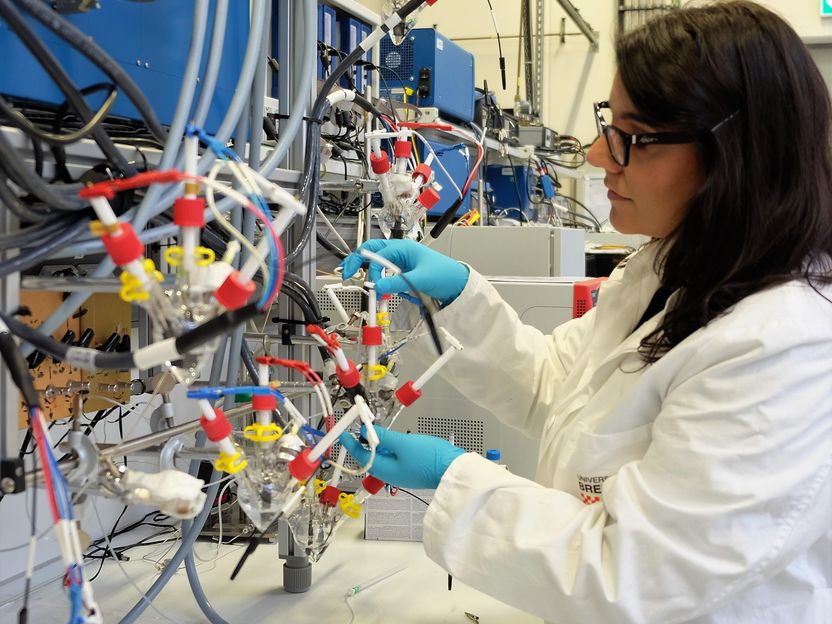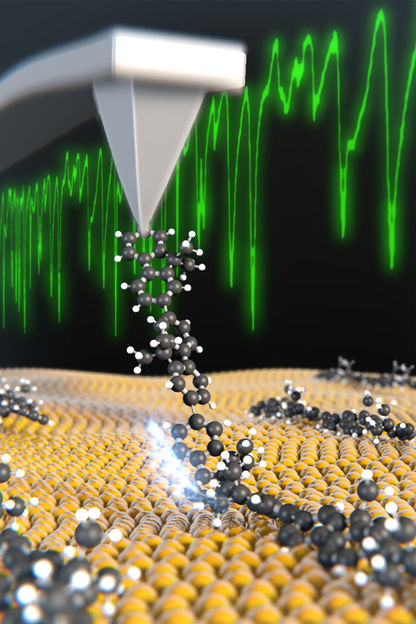Creating a color printer that uses a colorless, non-toxic ink inspired by nature
From dot-matrix to 3-D, printing technology has come a long way in 40 years. But all of these technologies have created hues by using dye inks, which can be taxing on the environment. Now a team reports the development of a colorless, non-toxic ink for use in inkjet printers. Instead of relying on dyes, the team exploits the nanostructure of this ink to create color on a page with inkjet printing.
Current technologies blend dyes - think CMYK or RGB - to print in color. But these substances can harm the environment. Some dyes are toxic to marine life or can react with disinfectants like chlorine and form harmful byproducts. An alternative to dyes involves changing the nanostructure of materials so that they reflect light in particular ways. An example of this kind of coloring by light interference is found in nature: Squids can modify the nanostructure of their skin to mirror back their surrounding environment, creating a natural camouflage. Previous research has investigated printing color by light interference, but these attempts have required high-temperature fixing or specialized printing surfaces. Aleksandr V. Yakovlev, Alexandr V. Vinogradov and colleagues at ITMO University wanted to develop a nanostructure color printing technology that is "greener" and can be printed on a wide variety of surfaces.
The team found that a colorless titanium dioxide-based colloidal ink was the best suited for the job. It does not require high temperature fixing and can be deposited on many surfaces. The researchers can control the color produced on surfaces by varying the thickness of ink deposition from a normal inkjet printer. Creating a vibrant color red with this method and this very narrow angle of coloring remains a challenge. This method, however, has generated the first reported "green" ink that is both safe for the ecosystem and does not fade from UV exposure, the researchers say.
Original publication
Most read news
Original publication
Aleksandr V. Yakovlev, Valentin A. Milichko, Vladimir V. Vinogradov, and Alexandr V. Vinogradov; "Inkjet Color Printing by Interference Nanostructures"; ACS Nano; 2016
Organizations
Other news from the department science

Get the chemical industry in your inbox
By submitting this form you agree that LUMITOS AG will send you the newsletter(s) selected above by email. Your data will not be passed on to third parties. Your data will be stored and processed in accordance with our data protection regulations. LUMITOS may contact you by email for the purpose of advertising or market and opinion surveys. You can revoke your consent at any time without giving reasons to LUMITOS AG, Ernst-Augustin-Str. 2, 12489 Berlin, Germany or by e-mail at revoke@lumitos.com with effect for the future. In addition, each email contains a link to unsubscribe from the corresponding newsletter.
Most read news
More news from our other portals
Last viewed contents

On the Path to the Next Generation of Energy Storage Systems - Aqueous zinc-ion batteries without any risk of explosion or fire


























































